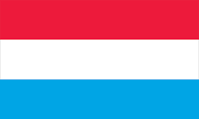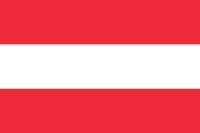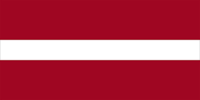The AutoCAD ribbon is a fundamental part of your AutoCAD interface. It provides you with ribbon tabs, each of which is occupied by ribbon panels, which incorporate most of the commands you need to operate AutoCAD effectively.
AutoCAD has four ribbon settings. These can sometimes inadvertently be activated, making you think you have broken AutoCAD somehow. You haven’t, trust me. It takes a lot to break AutoCAD nowadays!
The ribbon settings are activated by clicking on a small button on the top of the ribbon. If you blink, you might miss it, and many AutoCAD users do. It is one of those buttons that gets clicked on, and then you’re not sure how to get things back to what they looked like before.
If you check the top of your AutoCAD ribbon, you will see a small white rectangular button with an arrow on it. Figure 1.3 shows you where you will find it.
Figure 1.3: The ribbon settings button
Based on its size, you can understand why it gets missed easily, right? If you click on the button (not the fly-out arrow to the right of it), you will see the appearance of your ribbon change. Don’t panic. All you have done is change the appearance of the ribbon.
Each of the four settings displays the ribbon differently, giving you varying methods of utilizing the ribbon during your day-to-day AutoCAD work.
I’ll briefly explain how each setting works. The ribbon settings change based on whether you have clicked the ribbon settings button at the top of the ribbon and how many times you have clicked it consecutively:
- The default ribbon (no click required): This ribbon setting is set by default when you first start using AutoCAD. As you can see in Figure 1.4, it provides a view of all the ribbon tabs, panels, and icons.
Figure 1.4: The default ribbon display
- Minimize to Panel Buttons (first click): After the first click of the ribbon settings button, you will set the ribbon to Panel Buttons. The ribbon tabs are still available, but each panel on its respective tab will now only display as a button, as shown in Figure 1.5.
Figure 1.5: The ribbon display using Minimize to Panel Buttons
Upon clicking on any panel button, the selected ribbon panel will display, as shown in Figure 1.6.
Figure 1.6: The Draw panel selected while using Minimize to Panel Buttons
The preceding figure shows the Home tab as current, and the Draw panel after the Draw panel button has been clicked.
As you can see, this ribbon setting reduces the footprint of the ribbon, providing more screen space for your AutoCAD drafting and modeling, by only displaying the panel selected by the panel button. If you move the cursor away from the selected panel, it will revert back to the panel buttons view.
- Minimize to Panel Titles (second click): After the second click of the ribbon settings button, you will set the ribbon to Panel Titles. The panels are now displayed with only their titles, thus reducing the ribbon footprint on your screen even more as seen in Figure 1.7.
Figure 1.7: The ribbon display using Minimize to Panel Titles
Upon clicking on any panel title, the selected ribbon panel will display, as shown in Figure 1.8.
Figure 1.8: The Draw panel selected when using Minimize to Panel Titles
The preceding figure shows the Home tab as current with the Draw panel title selected. As before, when you move the cursor away from the panel, it will revert back to the panel titles view.
- Minimize to Tabs (third click): After the third click of the ribbon settings button, you will set the ribbon to Tabs. There are now no panel buttons or titles displayed, only the ribbon tabs. This is the most minimal view of the ribbon in AutoCAD as you can see in Figure 1.9.
Figure 1.9: The ribbon display using Minimize to Tabs
To access the ribbon panels when using the Minimize to Tabs setting, you will need to select the ribbon tab first, then select the required command icon on its respective panel, as shown in Figure 1.10.
Figure 1.10: The Home tab selected when using Minimize to Tabs
As you can see in the preceding figure, all the panels in the selected tab are displayed. In this case, the Home tab on the ribbon has been selected, displaying the Draw panel, the Modify panel, and all panels that display under the Home tab on the ribbon
Note
Figure 1.10 has been truncated slightly to fit better on the page. Hence, only the Draw and Modify panels are displayed in full.
- Back to default (fourth click): A fourth click on the ribbon settings button will bring you back to the default ribbon setting, as shown in Figure 1.11.
Figure 1.11: Back to the default ribbon setting on the fourth click
So, as you can see, it is easy to click on the ribbon settings button and make these changes in error. If you have never used the ribbon settings button before, it can cause a certain amount of trepidation as you wonder what you have done to your AutoCAD interface. However, by using the sequence of clicks I have described in this section on the ribbon settings button, you can now get back to the default ribbon setting if required.
You can now also see how the ribbon settings can be changed to suit your specific requirements. This allows you to utilize more screen space in AutoCAD by reducing the ribbon footprint. This is especially useful when your screen space is restricted. A typical example would be running AutoCAD on a laptop with a smaller screen.
Until this point, I have not mentioned the small fly-out arrow to the right of the ribbon settings button, as shown in Figure 1.12.
Figure 1.12: The fly-out menu on the ribbon settings button
Upon clicking on the fly-out arrow, you will see the small fly-out menu as shown in the preceding figure. This allows you to select a specific ribbon setting rather than clicking through them on the ribbon settings button, as mentioned earlier.
Once a specific ribbon setting has been selected, it will remain set. You will need to set the menu back to Cycle through All to use the ribbon settings button to cycle through each ribbon setting.
The ribbon settings in AutoCAD are a great way of gaining that little bit more screen real estate when working on smaller displays. As we move toward workstation replacement laptops, this will help. Yes, you can hook up to a gigantic display monitor when in the office, but when you’re traveling and you only have a 15-inch laptop display at your disposal, that ribbon settings button will prove mighty useful!
Tips and tricks #1
You will notice a fly-out arrow on the title bars of some of the ribbon panels. If you click on the fly-out arrow on the panel, the hidden command icons from that panel are displayed. Click on the small pin icon and those hidden command icons will remain pinned open and will display until the pin icon is clicked again. The hidden icons will then revert into the ribbon. Figure 1.13 shows you where you will find the pin icon using the Draw panel on the Home tab of the ribbon.
Figure 1.13: The pin icon that allows the hidden command icons to be pinned open (shown pinned)
Now that you know how you can fix the AutoCAD ribbon settings to suit your workflow without feeling like you have broken AutoCAD, let us move on to learning how we can improve the UI even further using sticky panels.
AutoCAD for Mac
AutoCAD for Mac does not have a ribbon interface like AutoCAD for Windows does, so there is no way of changing the ribbon appearance. AutoCAD for Mac uses an icon menu to the left of the AutoCAD for Mac screen. You can edit the icon settings for each icon panel by clicking on the gearwheel icon. Figure 1.14 shows the Draw panel and its default icon settings. In AutoCAD for Mac, you still click and hold for the fly-out icon menus, much like in AutoCAD for Windows, to get access to more instances of a command, such as the Arc fly-out menu.
Figure 1.14: The icon settings in the Draw panel in AutoCAD for Mac
You now have a good understanding of the AutoCAD ribbon and its settings and functionality. In the next section, you will learn how to use sticky panels (from the ribbon) to your advantage.
 United States
United States
 Great Britain
Great Britain
 India
India
 Germany
Germany
 France
France
 Canada
Canada
 Russia
Russia
 Spain
Spain
 Brazil
Brazil
 Australia
Australia
 Singapore
Singapore
 Canary Islands
Canary Islands
 Hungary
Hungary
 Ukraine
Ukraine
 Luxembourg
Luxembourg
 Estonia
Estonia
 Lithuania
Lithuania
 South Korea
South Korea
 Turkey
Turkey
 Switzerland
Switzerland
 Colombia
Colombia
 Taiwan
Taiwan
 Chile
Chile
 Norway
Norway
 Ecuador
Ecuador
 Indonesia
Indonesia
 New Zealand
New Zealand
 Cyprus
Cyprus
 Denmark
Denmark
 Finland
Finland
 Poland
Poland
 Malta
Malta
 Czechia
Czechia
 Austria
Austria
 Sweden
Sweden
 Italy
Italy
 Egypt
Egypt
 Belgium
Belgium
 Portugal
Portugal
 Slovenia
Slovenia
 Ireland
Ireland
 Romania
Romania
 Greece
Greece
 Argentina
Argentina
 Netherlands
Netherlands
 Bulgaria
Bulgaria
 Latvia
Latvia
 South Africa
South Africa
 Malaysia
Malaysia
 Japan
Japan
 Slovakia
Slovakia
 Philippines
Philippines
 Mexico
Mexico
 Thailand
Thailand












